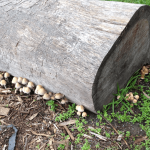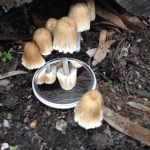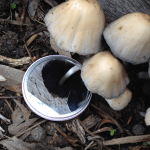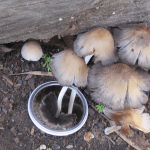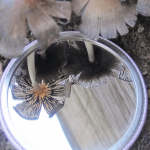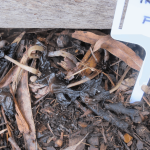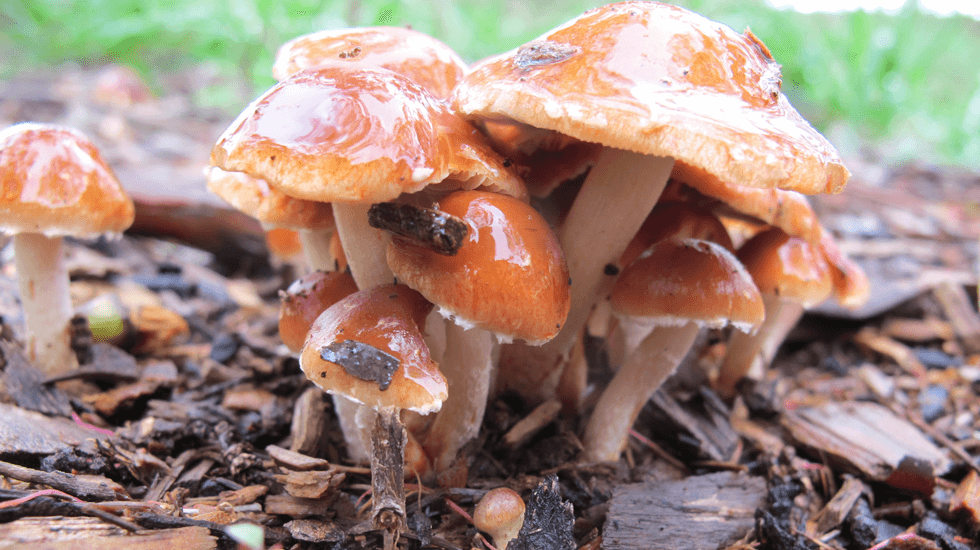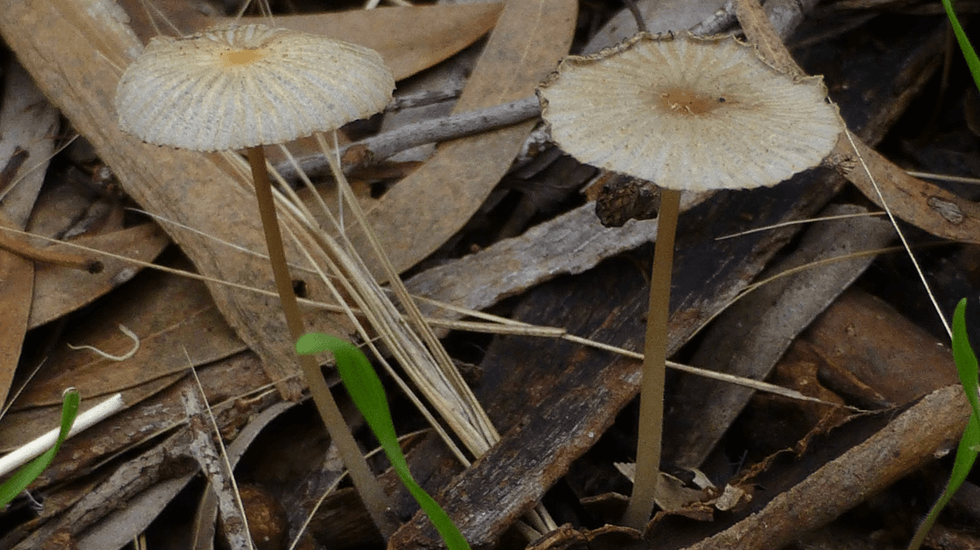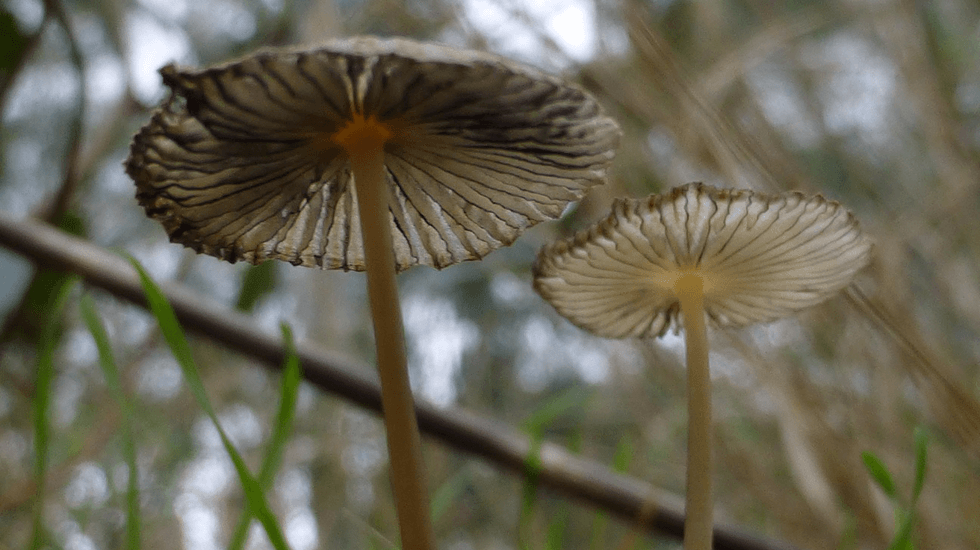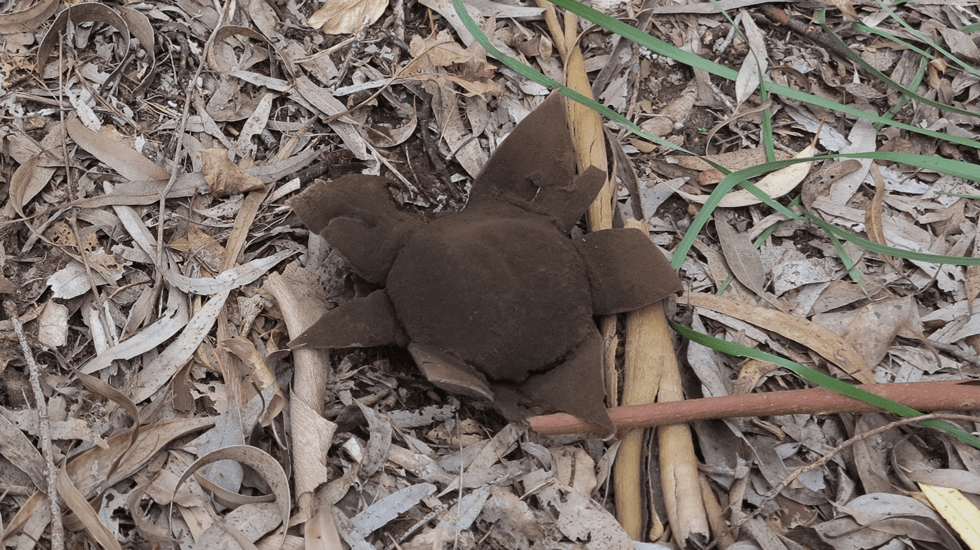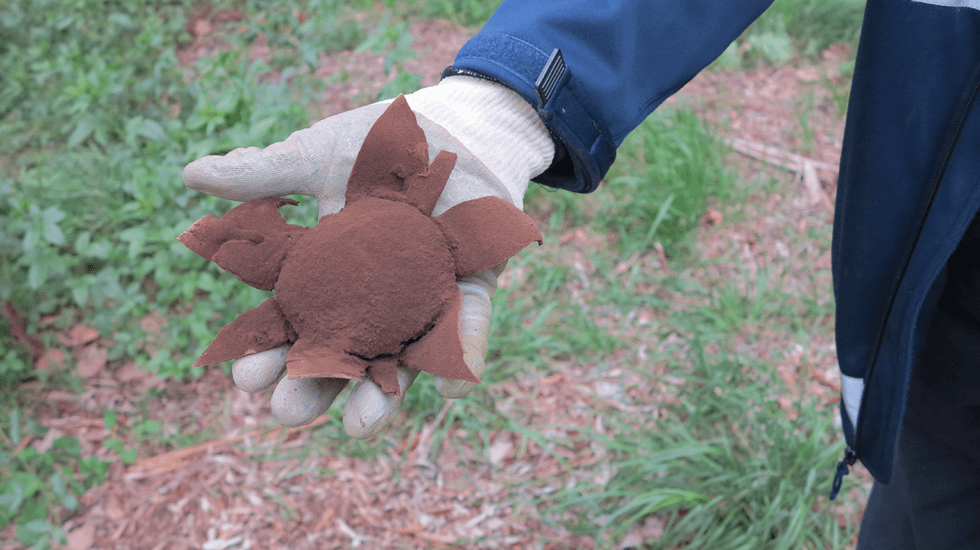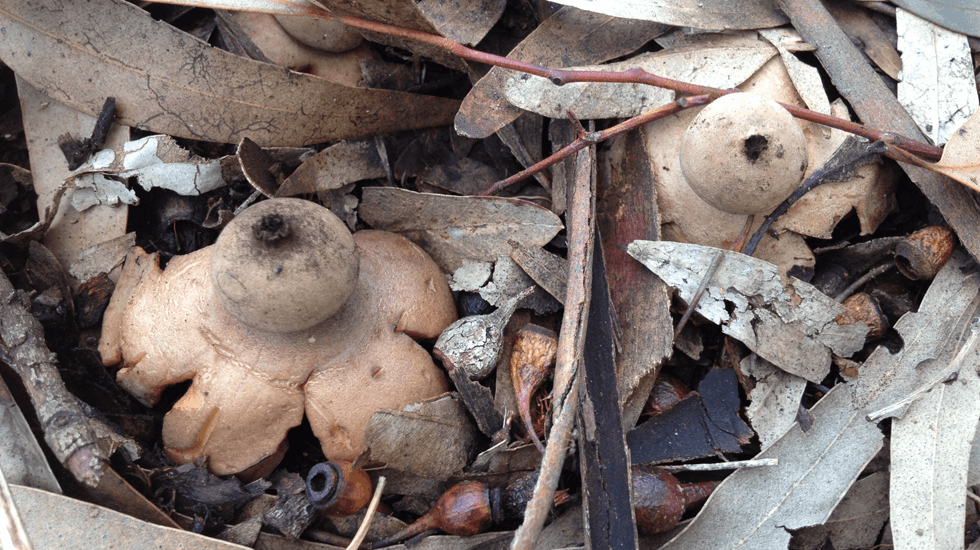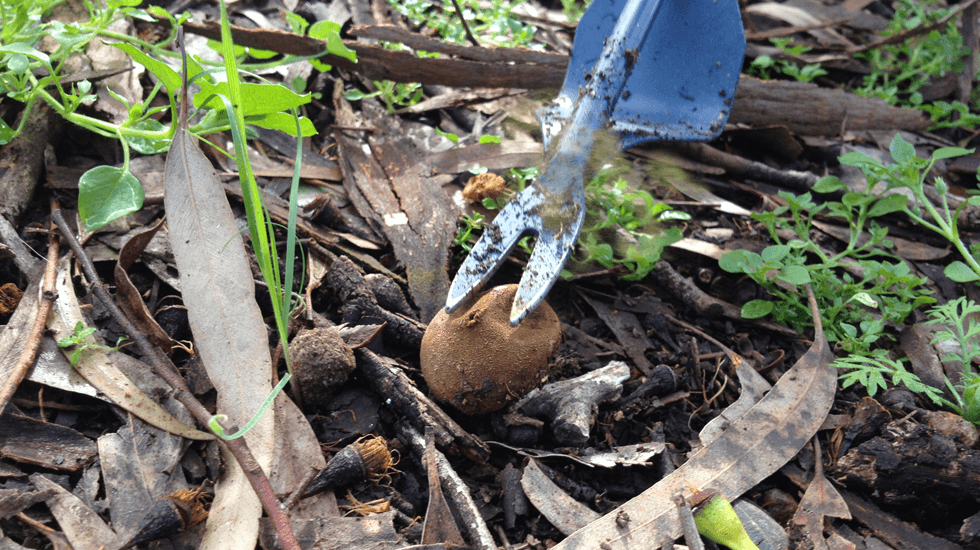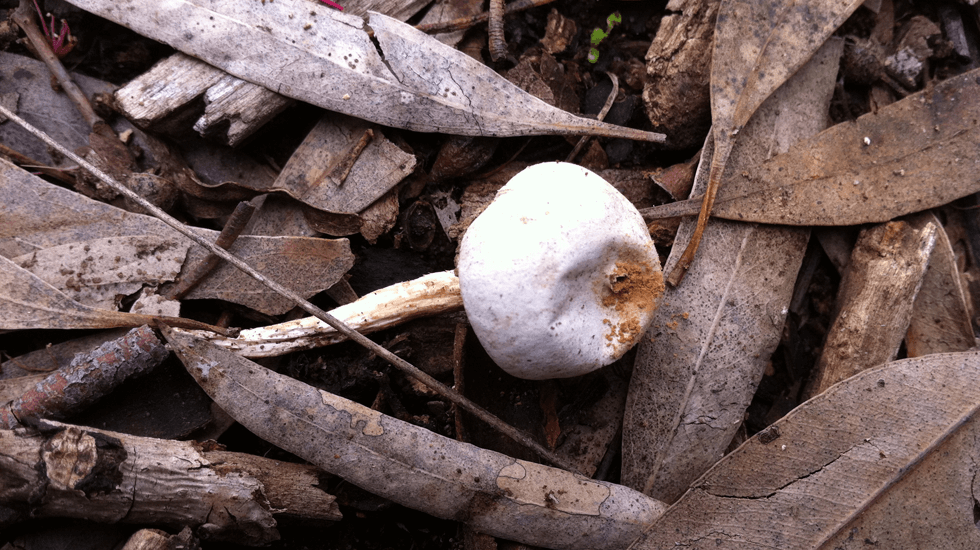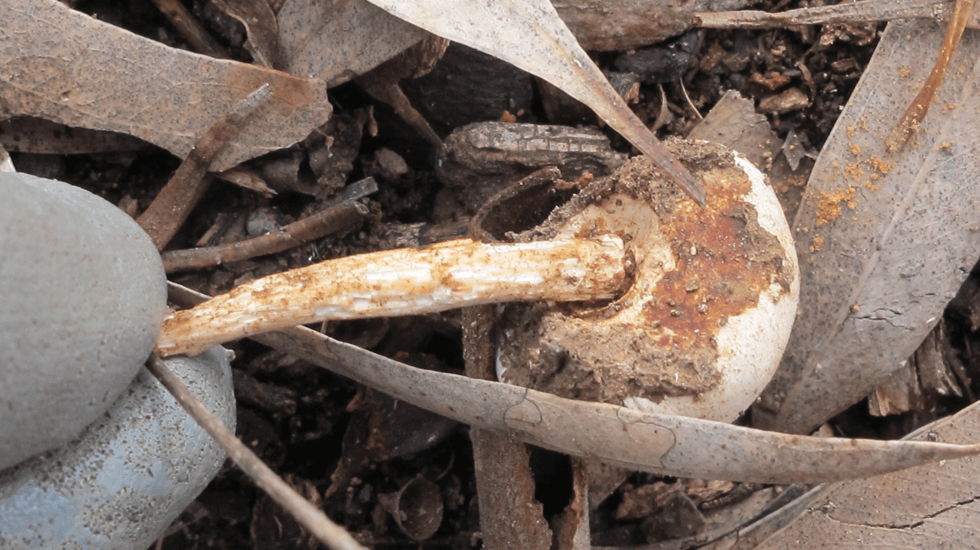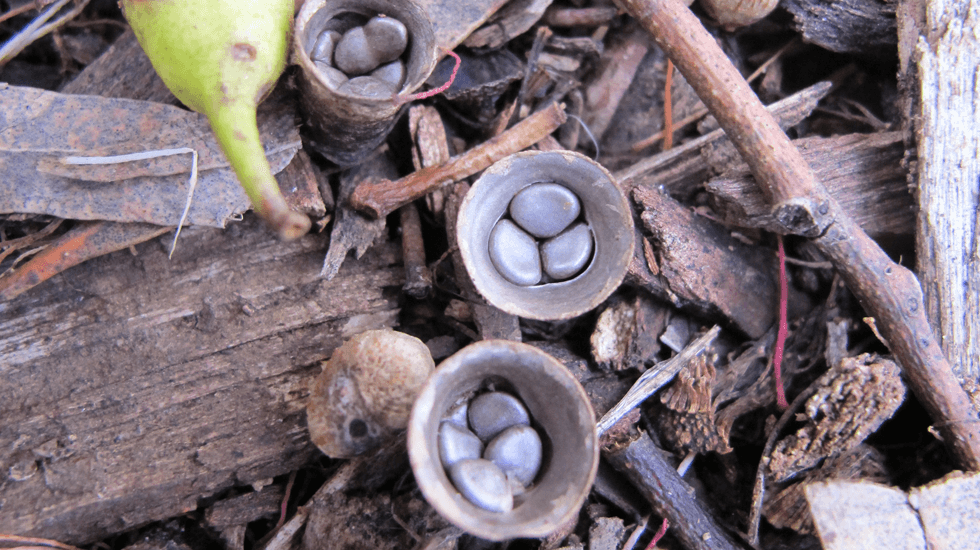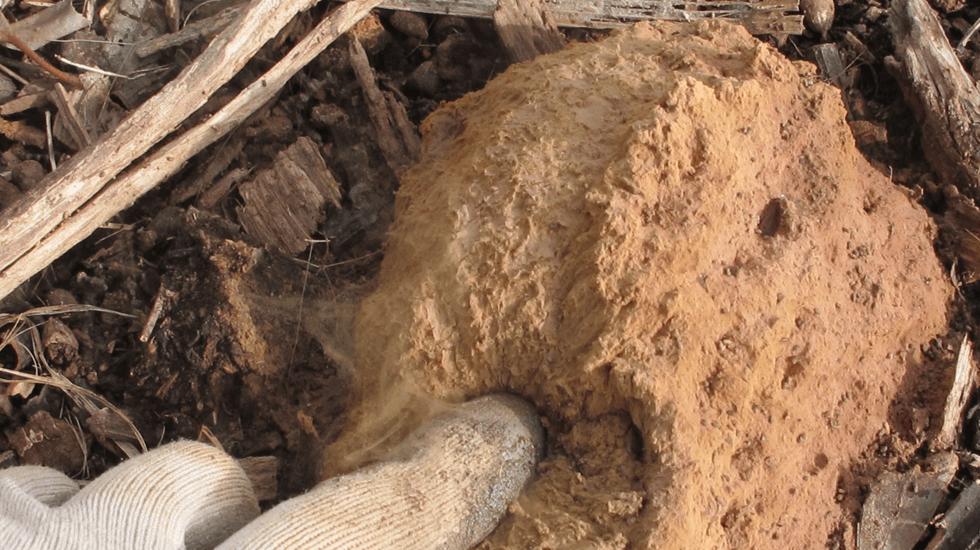
Fungi
Although usually hard to see, Fungi play very important roles in all land ecosystems.
Their fruiting bodies can often be seen at VPOP sites, especially after rain. These structures (mushrooms, puffballs, Bird’s nest fungi, cups, slime moulds etc) rise above the soil and allow the spores to be released and dispersed by the wind.
Rose is our group’s most avid Fungi Finder, and has provided the information below.
Photos are by Heather Whiting unless otherwise accredited.
Fungi are classified into their own kingdom and are one of the three most biological complex kingdoms on Earth, along with plants and animals.
Fungi are more like an animal than a plant as they gather their food rather than make their food as plants do. Animals and fungi both digest their food, although animals digest their food inside their bodies and fungi digest outside their bodies.
Three fungi feeding modes are:
- Mycorrhizal (mate or helper) has a symbiotic relationship with a living plant.
- Saprotrophic (rotter or slobberer) breaks down plant and animal material.
- Parasitic (slow killers or pirate) takes nutrients from a living plant/animal
The Galleries below highlight some of the fascinating fungi we have found mainly at Gilberton and Vale Park. However, most of the time fungi are ‘invisible’, and their fungi spores are very light and can travel a long distance before germinating, so we are including fungi found in the mid-Torrens regions. You never know, they may soon appear at our sites and suburbs!
N.B. Fungi identification can be tricky, so we are not guaranteeing that we are listing the correct Scientific names and also accepted Common names often do not exist. Therefore occasionally to make it easier to refer to our fungi, we may use a Local name which may not be widely accepted.
AGARICS
These are the familiar mushroom-type with cap, stalk and gills on the underside of the caps.
INKY CAPS or INK CAPS (Coprinus atramentarius) – saprotrophic found on 23-25th of July 2015 at Gilberton.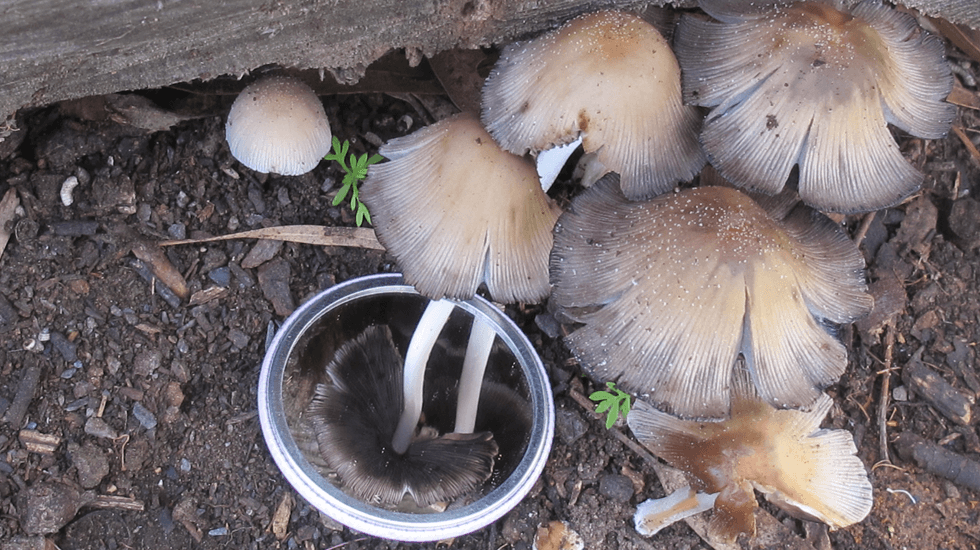 As shown in the gallery below, in 2-3 days this mushroom (the fruiting body) had erupted, changed from having white gills to having black gills, spread its spores, then digested itself turning into an inky mess!
As shown in the gallery below, in 2-3 days this mushroom (the fruiting body) had erupted, changed from having white gills to having black gills, spread its spores, then digested itself turning into an inky mess!
The Inky Caps itself however is still living in the soil breaking down the buried dead wood.
WOOD BLEWIT (Lepista nuda, a Fungimap species) – recycler/saprotrophic found June to August 2015 at Gilberton.This lovely mushroom occurs in areas with many Gum trees and has distinctive in-rolled cap edges & forked gills 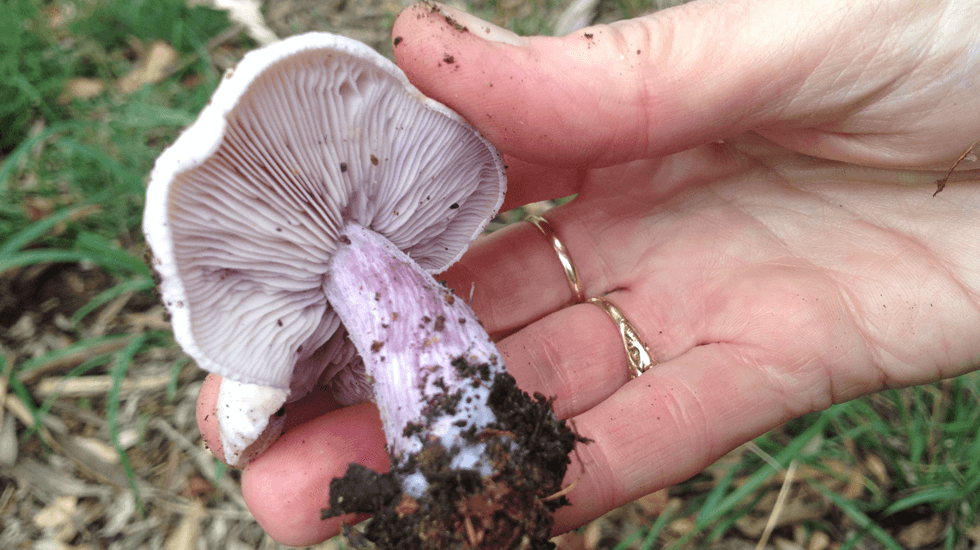 (i.e. the gills don’t all go all the way from the edge to the centre). The young mushrooms definitely have purplish hues to the cap, gills and stems, but it seems these all turn a pale brown with age. According to Fungimap, this is quite a rare species, yet we have a LOT of them at Gilberton!
(i.e. the gills don’t all go all the way from the edge to the centre). The young mushrooms definitely have purplish hues to the cap, gills and stems, but it seems these all turn a pale brown with age. According to Fungimap, this is quite a rare species, yet we have a LOT of them at Gilberton!
ORANGE CAPS (Hypholoma aurantiaca = Stropharia aurantiaca) is common in our mulched areas especially on the Wildflower Walk, as shown emerging after rain in July 2011. ‘Orange Caps’ is our local name for these agarics, as no listed common name could be found.
LITTLE BONNETS (Mycena spp.) These lovely small, almost transparent fungi were found on the Wildflower Walk in early May 2017, and beautifully photographed from above and below by Greg Coote from VPOP. ‘Little Bonnets’ is VPOP’s common name for these delicate fungi, as no listed common name could be found.
CUP FUNGI
A CUP FUNGI (probably Peziza vesiculosa or Paxina costifera) – saprotrophic? mycorrhizal? found by Rose on 12th of June 2015 at Gilberton.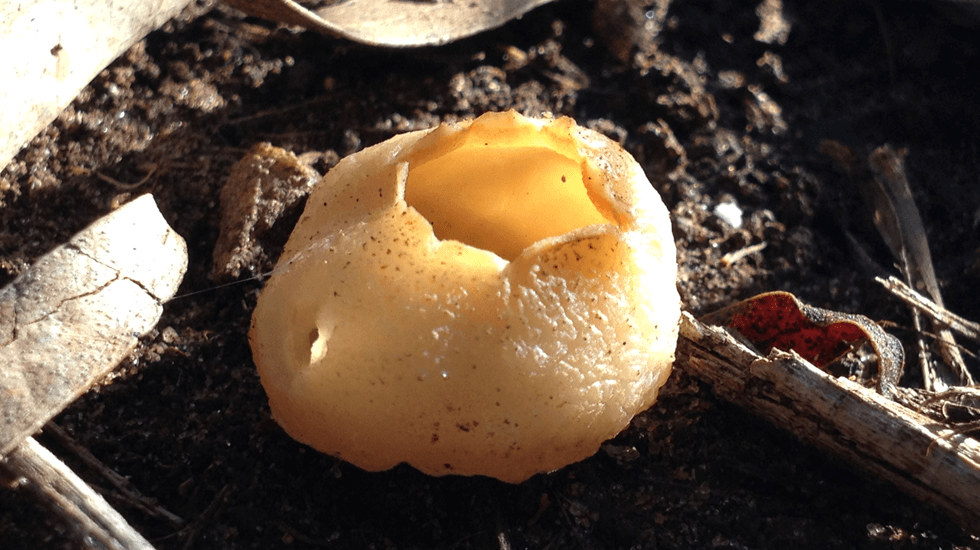
PUFFBALLS & ALLIES
We think this large HARD SKINNED PUFFBALL is Mycenastrum corium found in most years in our Gilberton Woodland (the Triangle). There is no listed common name so we call it our “Large Brown Flower Fungus”. It just rests on the surface in the leaf litter under gums, and takes months for the large central spore mass to disperse. Amazing!
In our Vale Park site, in the car park ‘island’ of large gums and other native vegetation, we can always find old ARCHED EARTHSTARS (Geastrum fornicatum, a Fungimap species) under the Ironbarks. In late autumn and winter, we find the wonderful new Earthstars, pushing high above the leaf litter, their spores dispersing through the ‘mouth’ when raindrops hit the puffball (see the ‘sooty’ deposits on the puffball in the photo). Heather also remembers seeing this fungi at Vale Park Primary School in the car park garden beds under gums and other native vegetation.
This small puffball, in the photo releasing spores with the aid of a weeder, is possibly Lycoperdon scabrum. We find it at both Gilberton (where this photo was taken) and Vale Park. As it has no listed common name, we call it a ‘GROUND PUFFBALL‘. Raindrops release the spores slowly, and this puffball can persist for a long time, with empty tissue-thin skins still to be found over summer.
This STALKED PUFFBALL is probably a Tulostoma spp. and was found in the car park garden beds of Vale Park Primary School.
BIRD’S NEST FUNGI
This delightful but tiny fungus is probably the FIELD BIRD’S NEST (Cyathus olla). This photograph was taken on the Wildflower Walk at Vale Park, although it has also been seen at Gilberton – both times it was the year after mulch was spread. Like the allied puffballs, the ‘eggs’ explode when raindrops hit them, releasing their spores.
SLIME MOULDS (MYXOMYCOTA)
Not really Fungi at all, this soft spongy mass releasing spores is the sporangia/aethalium of a Slime Mould (Fuligo septica) which has a common name of FLOWERS OF TAN.
Slime Moulds (also spelt Slime Molds) are so weird they are now classified in the separate Kingdom, PROTOCTISTA rather than the FUNGI Kingdom.
In these strange organisms, the spores grow into a visible, creeping amoeba-like mass, the plasmodium. This behaves like a giant amoeba, creeping along eating bacteria, fungi and other decaying organic matter. At some point however, perhaps due to limited food supply or changing conditions, it will again change to a sporangium, producing spores as shown in the potograph.
This species is world-wide and is sometimes referred to as Scrambled Egg Slime or Dog Vomit Slime Mold. The common name ‘Flowers of Tan‘, comes from early days when wattle bark was widely used for tanning. This species often occurred on the wet heaps of used wattle bark hence its common name. Apparently it can appear on wet grass, dead wood, woodchip mulch etc..
 Vale Park Our Patch
Vale Park Our Patch